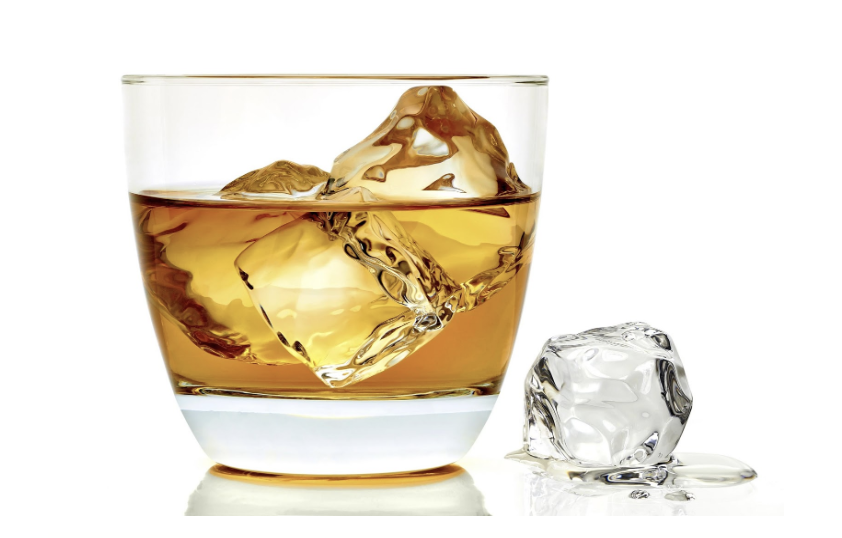Following the 2019 International Congress of the Society of Hair Testing (SoHT) in Lille, a revised adaptation to the general consensus on alcohol testing has been formulated by a committee of experts to support the assessments drawn when conducting hair analysis of abstinence and chronic excessive consumption.
DNA Legal has been at the forefront of toxicology services in the United Kingdom, with a strong emphasis on providing crystal clear clarity and precision in an industry that demands forensic integrity. Our strong alignment with the Society of Hair Testing is a testament to the commitment made to our clients to provide the most recent and up to date pioneering methods in our analysis and ultimately the delivery of this to our clients. Below we will paraphrase the key developments that have arose from the revised consensus to ensure you are fully informed of the key developments that have arose out of this.

Firstly, it is crucial to reaffirm the basis of alcohol testing in hair samples. Due to the direct determination of ethanol itself and its volatile nature, minor metabolites of ethanol consumption are analysed to distinguish consumption through the form of Ethyl Glucuronide (EtG) and Fatty Acid Ethyl Esters (FAEE), with particular focus on the Ethyl Palmitate (EtPa) metabolite. The general consensus on the levels of alcohol consumption that corresponds with an excessive alcohol results is stated to be an average consumption of 60g or more of pure ethanol a day over several months, translating to 5 units a day. These guidelines have been formulated by the World Health Organisation (WHO) and set the benchmark across the industry.
The revised SoHT testing alcohol consensus reaffirms that ‘occasional drinking’ cannot always be excluded from showing in hair strand alcohol analysis. Furthermore, and with all toxicology analysis, this should always be used in conjunction with supporting documentation and social reports to encompass all relevant factors. At DNA Legal, the recommendation to marry hair strand analysis with a sensitive blood alcohol analysis in the form of Phosphatidylethanol (PEth) that measures the direct bio-marker of ethanol is always strongly implored to support the hair analysis in the period of 2 to 3 weeks of uncollectable hair adhering to and beneath the scalp.
Collection, preparation of samples and general considerations
The strength of the forensic analysis lies within strict adherence of the set standards and volume of scientific literature that validates the practises exercised. The recent consensus reaffirms the importance of the site of the hair collection, with strong preference placed upon collection from the posterior vertex region (crown). This is due to the region having the least variance of growth rates, and the consistent blood flow in this area. If hair from the crown is unable to be collected, axillary and body hair can be taken but the differing physiology of hair not obtained from the crown must exercise levels of caution when the interpretation is considered. Our sample collection team are briefed fortnightly and extensively trained to adhere to the above when conducting sampling, with preparations kits in place to take alternative sample types pre-discussed with the instruction parties should the need arise.
Further clarification has been made on the incorporation of EtG & EtPA into the hair follicle itself, with no bias or impact borne out of differing hair colours. A key consideration with all hair testing centres on the influence of hair chemical treatments, encompassing bleaching, dyeing and perming and its impact upon the reading ascertained from the analysis. All of the aforementioned in addition to thermal hair treatments can have heavy influence on the readings obtained from analysis, with the SoHT revised consensus expressly indicating that the treatments are documented at the time of sampling and carefully considered in the expert interpretation. Furthermore, usage of ethanol containing products can and may increase the concentrations of EtPa in analysis. On the contrary, such ethanol containing products appear not to cause any undue influence of impact of EtG readings. This further goes on to extend to greases, wax, oil and varying other hair products. This is especially important to note, given DNA Legal’s firm commitment to never test FAEE’s encompassing EtPA as a standalone test, and our negative inference on a positive FAEE reading overruling a negative EtG result.
There is always the possibility of external factors impacting the tested alcohol markers. All samples must be subjected to the same rigorous preparation in the laboratory involving pre-washing and incubation processes in short. DNA Legal are pleased to inform that these practices have long been adapted in our laboratory when conducting our analysis and are perfectly aligned with the recommendation made from the consensus.
Abstinence Assessments
Given the societal impact of alcoholism, it is often critical to evaluate abstinence from alcohol as an aside from excessive consumption given its necessity in certain circumstances.
Firstly, EtG is the preferable marker to analysis when conducting any abstinence analysis. The analysis of EtPA as a standalone test is not recommended in any circumstances given the propensity for elevated or heightened levels as a result of ethanol-containing hair products.
A key recommendation made when conducting abstinence assessment is the use of pubic hair. This analysis is the most sensitive when defining true abstinence, with the notion that a singular exposure to alcohol consumption can be detected and ultimately produce a positive result, therefore providing a valuable tool in a true abstinence conclusion.
In regards to proximal head hair, a reading of 5 pg/mg of EtG in a segment of 3cm and up to 6cm will not contradict self-reported abstinence. This is further corroborated by a reading of lower or equal to 0.12 ng/mg of EtPa over a 0-3cm proximal hair segment, or a reading lower of equal to 0.15 ng/mg of EtPa over a 0-6cm proximal hair segment not contradicting a declaration of self-reported abstinence.
This is strongly aligned with the earlier recommendation in the SoHT consensus that analysis is used in conjunction with existing case file reports and accompanying documentation to provide further clarity to proceedings. DNA Legal will always further recommend the merits of PEth testing to be used in conjunction with hair strand testing when supporting the hypothesis of abstinence. The sensitivity of PEth testing, and its analysis of a direct bio-marker of ethanol and its presence or lack thereof will provide a further unique and supporting perspective when conducting any abstinence assessments and a member of our expert team will always be on hand to discuss the merits of this testing option when undertaking instruction.

Chronic Excessive Consumption Assessments
As with abstinence assessments, the need and necessity for strong forensic analysis in cases concerning excessive alcohol consumption is of paramount importance.
Any concentration of EtG above the reading of 5 pg/mg within a length of 3cm and up to 6cm will strongly suggest the repeated consumption of alcohol. The same concentration cut-off level can be used for both proximal head hair and body hair, but this does expressly exclude axillary hair which must exercise caution when interpreted. It is important to note that these readings do not necessitate chronic excessive alcohol consumption, but merely that alcohol consumption has been detected but not at levels that are deemed to be indicative of excessive usage.
However, a concentration greater than 30 pg/mg EtG when conducted over a proximal hair segment with a length or 3cm and up to 6cm strongly suggests chronic alcohol consumption. This reading of 30 pg/mg is the perimeter used by DNA Legal since it’s inception, and is a strong reaffirmation of our close relationship with the SoHT.
The same concentration levels can be applied to hair samples not obtained from the scalp, but this expressly excludes axillary hair and the pubic hair region, with consideration given to the varying growth rates of said hair and potential impact of grooming patterns. At DNA Legal, the length and location or hair sample obtained are given extended consideration when all expert analysis is drafted.
If the sample obtained is below the recommended 3cm, or Court Order dictation for a time period to be tested that falls outside the recommended length for proximal hair samples, caution must be strictly applied when interpreted.
In regards to EtPa, a concentration of greater than or equal to 0.35g/mg in head hair strongly suggesting chronic excessive alcohol consumption when measured in the 0-3cm proximal segment. A 0-6cm proximal segment with a concentration greater than 0.45 ng/mg will also strongly suggest chronic excessive alcohol consumption. Once again with EtG analysis in proximal hair samples below 3cm or greater than 6cm, caution must be strictly applied when interpreted.

Concluding remarks
At DNA Legal we firmly feel within our ethos the importance of our clients making well-informed decisions when undertaking instructions and understanding the very nature of the testing provided in our services. Our forensic toxicology team are active members of the Society of Hair Testing (SoHT), the International Association of Forensic Toxicologists (TIAFT), the British Toxicology Society and the European Workplace Drug Testing Society (EWDTS). It is critical that the forensic toxicology industry is always being evaluated and subjected to further discussion to enhance our understanding, which is directly passed on to you as the reader and client, and the practises adhered in our everyday operations to ensure we are the forefront of the industry. We are built upon a foundation of trust and integrity which is at the credence of all that we do, and we feel it is critically important to reaffirm our alignment with the overarching bodies that provide the foundational guidelines to our practices.
Our dedicated team of client managers work directly alongside our internal Toxicology team, relaying the expert knowledge in a trusting objective manner to ensure you receive informative service as and when required. Please feel free to contact DNA Legal on 0203 4243470 to get in touch with an advisor who will be delighted to assist with your enquiry. For any enquiries, please use info@dnalegal.com and a member of the team will be in touch within the hour to best assist.
Thanks is given to the Society of Hair Testing ‘Consensus on Alcohol Markers Revision (2019)’ for all factual information provided in this blog, and their continuing commitment to industry standards as a whole.
The Consensus can be found at the following bookmark: https://www.soht.org/images/pdf/Revision_2019_Alcoholmarkers.pdf
